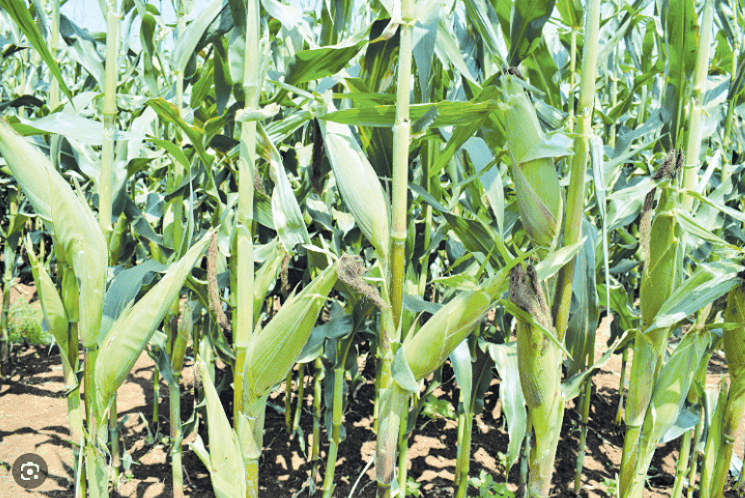One-quarter of world’s crops face threat from water stress

Experts have revealed that one in four of the world’s crops are threatened by water risks. These are crops grown in areas where water is highly stressed, highly unreliable or both – threats that could exacerbate hunger.
The experts’ revelations were made in October 2024, writing in the World Resources Institute (WRI)’s Aqueduct platform. This was after other experts in Forest Pulse revealed the latest trends in global forest loss and deforestation.
Forest Pulse is updated annually using annual tree cover loss data to provide a comprehensive overview of where forests have been lost around the world.
The world lost an alarming number of trees in 2023, almost 10 football fields of tropical primary forest per minute.
However, there were glimmers of progress, too, like Brazil and Colombia reducing primary forest loss by 46 per cent and 49 per cent, respectively.
So, how much forest was lost in 2024?
WRI experts also explained the history of carbon emissions. The visual history shows which countries have contributed most to climate change – and how that list has changed over the last two centuries.
Water-related data
But first let’s return to the revelation that one-quarter of the world’s crops are threatened by water risks.
In their article, Liz Saccoccia and Samantha Kuzma state that one out of every 11 people in the world grapples with hunger and that a hidden and growing driver is lack of water.
Liz Saccoccia is a Water Security Associate whose work includes contributing to the water, peace and security partnership.
Samantha Kuzma is the data lead and senior manager for Global Water Data Products at WRI. She researches, develops, and applies water-related data for a diverse set of projects.
The new WRI analysis shows that one-quarter of the world’s crops are grown in areas where the water supply is highly stressed, highly unreliable or both. Mounting risks like climate change and increased competition for water are threatening water supplies, and in turn food security.
Rice, wheat and corn, which provide more than half the world’s food calories – are particularly vulnerable: 33 per cent of these three staple crops are produced using water supplies that that are highly stressed or variable.
These growing water challenges come as food demands are increasing. Research shows the world will need to produce 56 per cent more food calories in 2050 than it did in 2010 to feed a projected 10 billion people.
Both irrigated and rain-fed crops face growing threats. Farmers water their crops using rain that falls naturally or through irrigation, where water is diverted from rivers or reservoirs or pumped from underneath the ground to the land’s surface.
Rain-fed and irrigated crops are both important for food security, but both face mounting threats. Irrigated crops, which make up 34 per cent of the world’s total production by weight, are vulnerable to increasing competition over shared water supplies, known as water stress.
Rain-fed crop, which make up the other 66 per cent of the world’s total production, are vulnerable to erratic weather patterns. Globally, 8 per cent of the rain-fed crops the world produces are grown in areas facing high to extremely high variations in annual water supply, places where rainfall patterns may swing wildly between drought and deluge.
Buffering shocks
Water stress is considered “high” if at least 40 per cent of the local water supply is used to meet demands from farms, industries, power plants and households. About 60 per cent of the world’s irrigated crops (by weight) are currently grown in areas facing high or extremely high levels of water stress.
The problem with growing crops in both highly-stressed and highly-variable areas is that there isn’t much of supply buffer to weather shocks such as prolonged droughts. Increasing water competition and climate change are stretching available supplies to the limit. Growing food in these crops therefore puts food security in jeopardy.
Just a handful countries such as Brazil, China, Egypt, India Indonesia, Mexico, Pakistan, Thailand, US and Vietnam, produce 72 per cent of the world’s irrigated crops, including sugarcane, rice, wheat, vegetables, cotton and maize.
Two-thirds of these crops face high to extremely high levels of water stress. That’s a problem for food securities and economies. Irrigated crops are often cash crops exported to other nations. Meanwhile, demand for irrigation is poised to grow.
Agriculture is already the biggest driver of water stress, responsible for 70 per cent of the world’s withdrawals. Warming temperatures are partially driving this trend. The warmer it is, the thirstier the crops become.
Rain-fed agriculture supplies most of the world’s crops, but faces increasingly unstable precipitation. The majority of the world’s food – 66 per cent of all crop production – still comes from rain-fed agriculture. For example, 75 percent of the world’s corn comes from rain-fed farms, predominantly in the US, China and Brazil.
Yet as climate change fuels longer, more frequent droughts and deforestation alters local precipitation, farmers will find it increasingly difficult to grow rain-fed crops. By 2050, 40 percent more rain-fed crops will face unreliable water supplies than in 2020, with the greatest increases occurring in Australia, China, India, Niger and the US.
However, it is still possible to produce more food in a water-constrained world. WRI experts say that with the right policies that address the nexus of food production water management and conservation, businesses and governments can ensure that breadbaskets remain full.
Turning to the trends in global forest loss and deforestation, Forest Pulse reveal that between 2022, Brazil and Colombia experienced a remarkable 36 percent and 49 percent decrease in primary forest loss, respectively, yet these dramatic reductions, the rate of tropical primary forest loss in 2033 remained stubbornly consistent with recent years, according to the University of Maryland’s GLAD lab and available on WRI’s Global Forest Watch Platform.
As some countries show political will to reduce forest loss and others do not, the frontiers of forest loss are shifting – the notable reductions in Brazil and Colombia were counteracted by sharp increases in forest loss in Bolivia, Laos and Nicaragua, and more modest increases in other countries.
Increasing emissions
Total tropical primary loss in 2023 totalled 3.7 million hectares, the equivalent of losing almost 10 football fields per minute. While this presents a 9 percent decrease from 2022, the rate in 2023 was nearly identical to that of 2019 and 2021. All this forest loss produced 2.4 gigatonnes (Gt) of carbon dioxide emissions in 2023, equivalent to almost half of the annual fossil fuel emissions of the United States.
Another primary driver of forest loss seen in the Democratic Republic of the Congo (DRC) in 2023 was artisanal and semi-industrial mining. Though a relatively small driver of forest loss, mining that is not conducted responsibly can lead to deforestation and degradation of local scales as well as to human rights abuses for workers and other negative impacts to communities and ecosystems.
While high rates of primary loss continue, the government of DRC has promised to invest in an economy not based entirely on resource exploitation.
Finally, WRI’ Climate Watch platform revealed that carbon dioxide (CO2) emissions from human activities are now higher than at any point in our history – looking at major drivers of increasing emissions, such as population growth, economic development and energy use.
Global emissions were 182 times higher in 2022 than they were in 1850, around the time the Industrial Revolution was underway. For context, the United Kingdom was the world’s largest emitter in 1850. Its emissions were nearly six times those of the US, the second-ranked country, with France, Germany and Belgium among the top five emitters.
As of 2022, China ranked as the world’s largest CO2 emitter, followed by the US, India, Russia and Japan. However, among the top 10 CO2 emitters, the US has the highest emission per person, double those of China and eight times those of India.
COVID-19 caused a sharp decrease in emissions but it was short-lived. The pandemic had a drastic effect on local economies, resulting in the largest annual drop in CO2 emissions. In 2020, global emissions fell by 1.5 billion metric tonnes of CO2 – and amount equivalent to Japan’s CO2 emissions that year.
This was twice the size of the 1992 drop after the dissolution of the Soviet Union (the second largest emissions drop in recorded history). Nonetheless it was temporary. Emissions bounced back quickly as countries resumed their economic activities, with 2021 surpassing 2019 levels.









